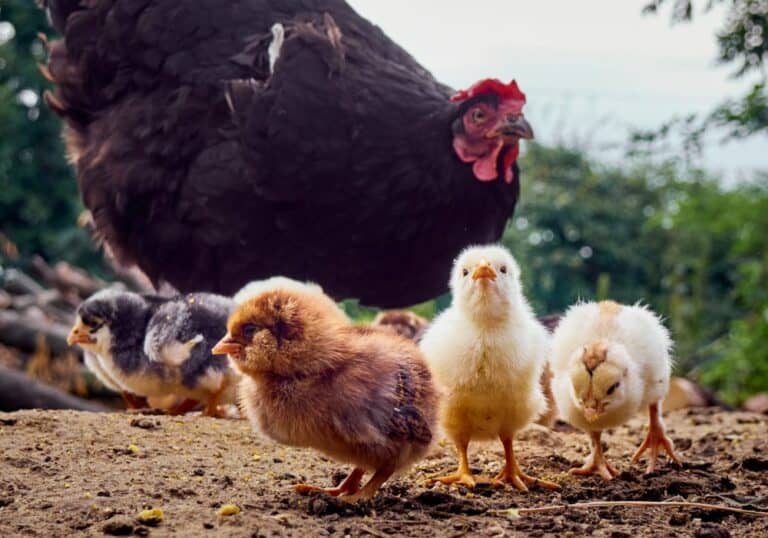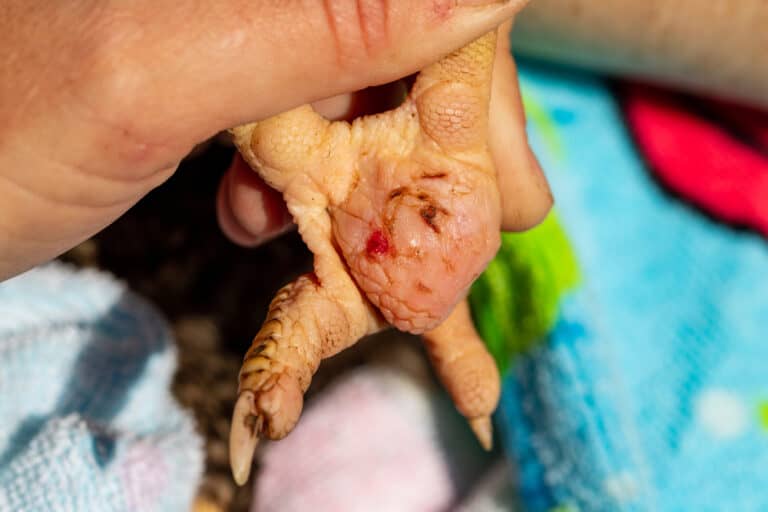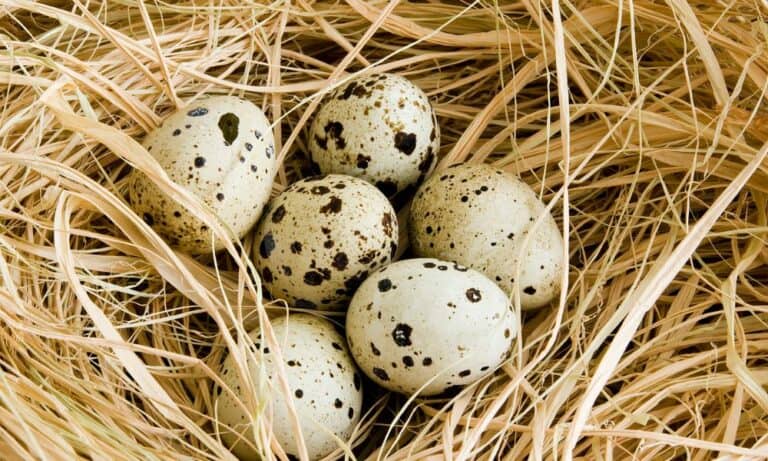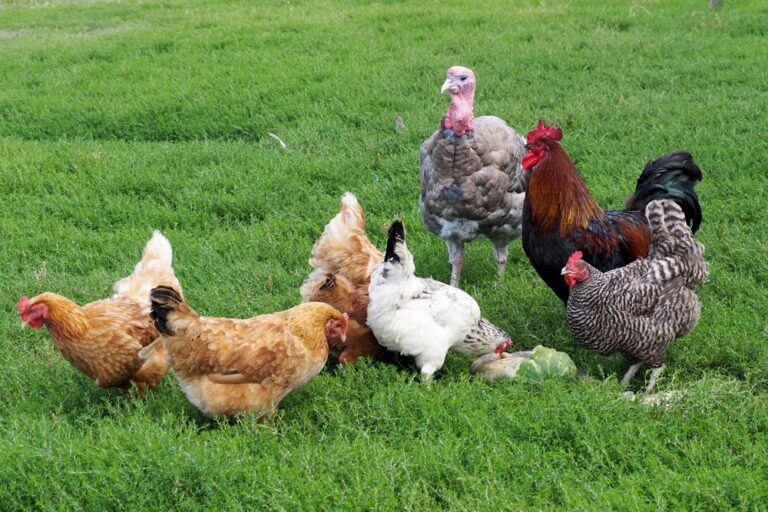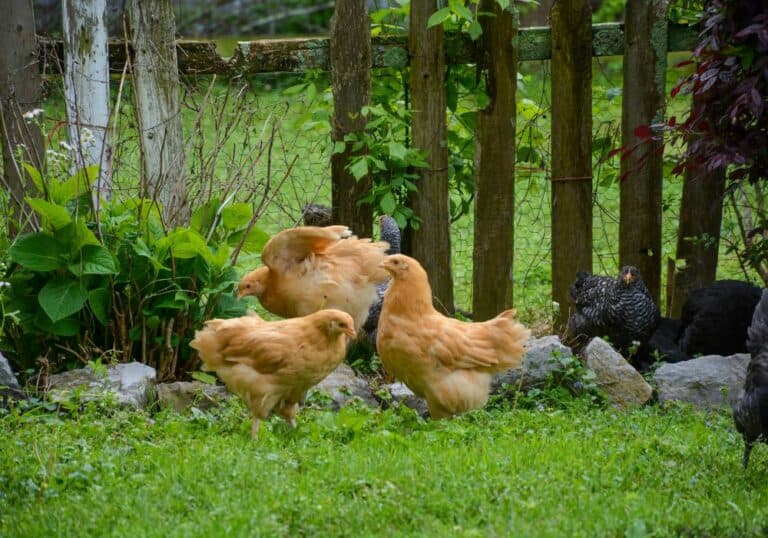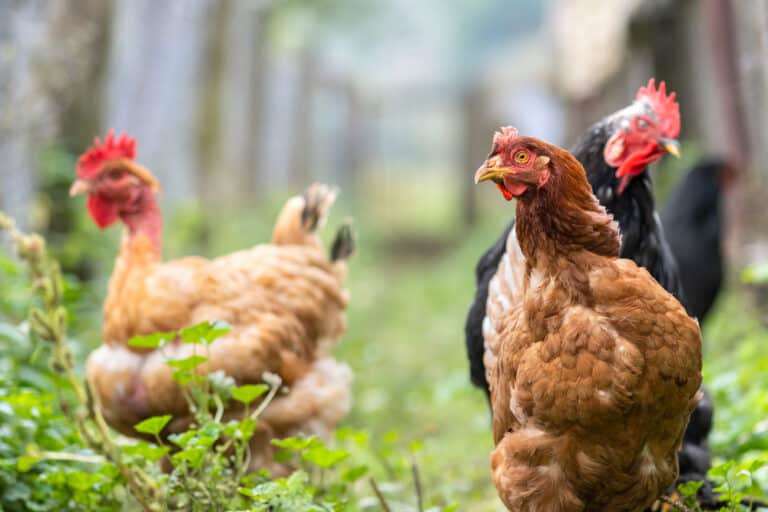Vent Gleet in chickens is a cloacal infection, and it is not the same thing as pasty butt when sticky feces clog chicks butt. This condition is curable, but you shouldn’t apply antibiotics on your own. They can’t help if your flock copes with fungi infestation and can damage good bacteria in guts.
This disease may occur in any chicken, so affected ones are not always the weakest flock members. You can prevent this unpleasant condition by reducing stressors and feeding your flock with a well-balanced diet. Once the disease occurs, you will face decreasing egg production.
What Is the Vent?
The vent (cloaca) is a three-chambered external opening for three main systems in poultry, the reproductive, urinary, and digestive tracts. It is basically the bell-shaped enlargement representing the intestine and rectum end with multiple purposes, including egg laying and urine and feces excretion.
The health of this body part is a crucial indication of overall birds’ health, including fowl. When the cloaca is healthy, chickens produce tightly packed poop with a white cap representing urine. That area is clean without stained, pasted, and matted feathers.
What Is Vent Gleet in Chickens?
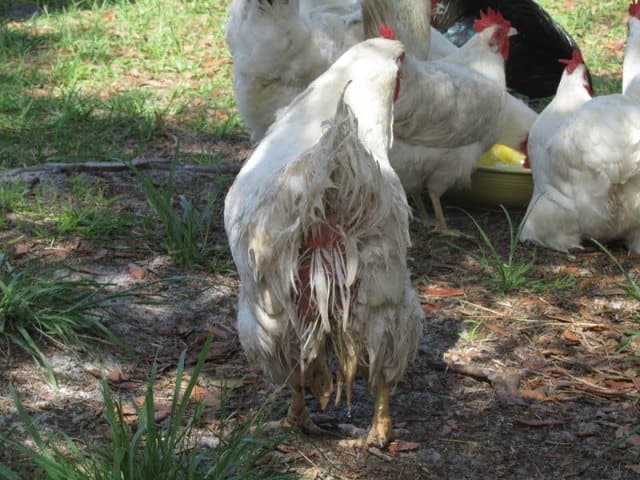
Vent Gleet (pasting, cloacitis, infected cloaca) is an infection affecting the chickens’ vent followed by a slimy matter seeping from the vent. Remember that it is rarely a cloacal disease but typically an introduction to a larger problem.
Veterinarians often diagnose this condition as an infection followed by feather pasting, yellowish-white discharge, and foul fermenting yeast-like odor around the cloaca.
Remember that Vent Gleet is not the same thing as a pasty butt. The pasty butt refers to sticky poop clogging chickens’ butts, sometimes leading to Vent Gleet.
You can recognize several possible causes of this health condition, but one of the most common is a fungal infection (thrush) caused by Candida albicans. It primarily occurs in chickens because of bacteria imbalance in guts and increased pH levels.
Even though this condition is curable and almost never fatal, it quickly spreads to the reproductive system, causes complications, and becomes more challenging to treat.
What Causes Vent Gleet?

Vent Gleet is not a contagious health condition but primarily appears due to acute stress. Any alteration of the cloaca pH can trigger infection, meaning all your flock can get ill because of the underlying anxiety.
Besides acute stressors, like moldy feed, lack of water, high temperatures, and oral antibiotic treatments, you can find numerous other reasons for this condition. The most common are:
- Fungal infection (Candida albicans)
- Underlying bacterial bowel infection
- Secondary infection after a vent prolapse or pecking injury of this body part
- PH imbalance
- Disturbed hormonal cycles or excessive hormone fluctuations just before the first egg laying or brooding
- Protozoa or other internal parasites
- Pasty butt
- Reaction to the herpes virus carried by cockerels
Problems with Vent Gleet typically occur in laying hens in June, July, and August. If you face this disorder in winter, from September to January, a trigger is probably a lack of water, low-quality or contaminated food, or intestinal parasites.
Vent Gleet Symptoms in Chickens
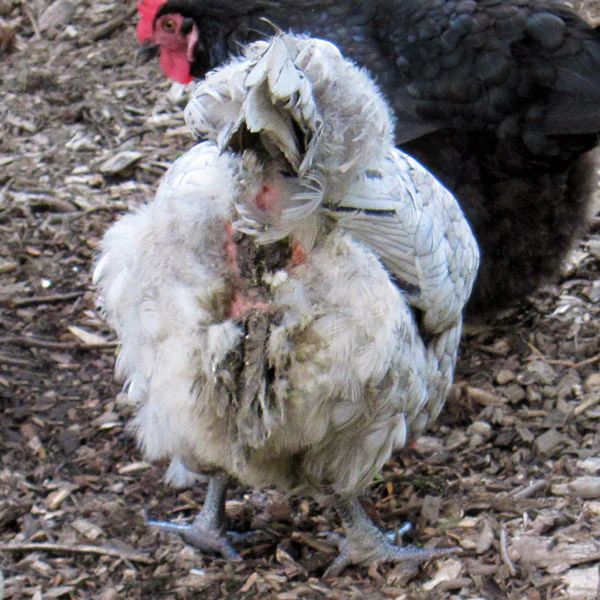
The first symptoms of Vent Gleet are not obvious, so you should pay attention to your chickens and control their health regularly. Since the typical reason for this condition is stress, you can prevent it by following guidance about poultry breeding.
On the other hand, recognizing the symptoms of this disorder is crucial for timely reaction and therapy. Let’s take a look.
1. Early symptoms
Most Vent Gleet symptoms are unnoticed initially because chickens regularly eat, so you should be careful. They include:
- Lack of vitality
- Appetite disorder
- Feathers suddenly lose color and shine
- Vent feathers pasting
- Soft and bloated belly, firm to the touch later
- Loose, slimy, watery, and sometimes bloody poop
Be aware that only early problem detection can result in successful curing without additional complications. The goal is to identify stress factors, reduce stress, and stimulate immunity to prevent possible secondary infections.
2. Advanced symptoms
Once the situation worsens because of lack of timely treatment, you can notice severe symptoms in affected chickens, such as:
- Slimy yellowish-white discharge from the vent
- Foul, fermenting yeast-like odor around the vent
- Egg-laying reduction
- Soiled vent feathers and white crusting on tail plumage
- Difficult defecation
- Red, bloody, and swollen vent area
Vent Gleet Diagnosis
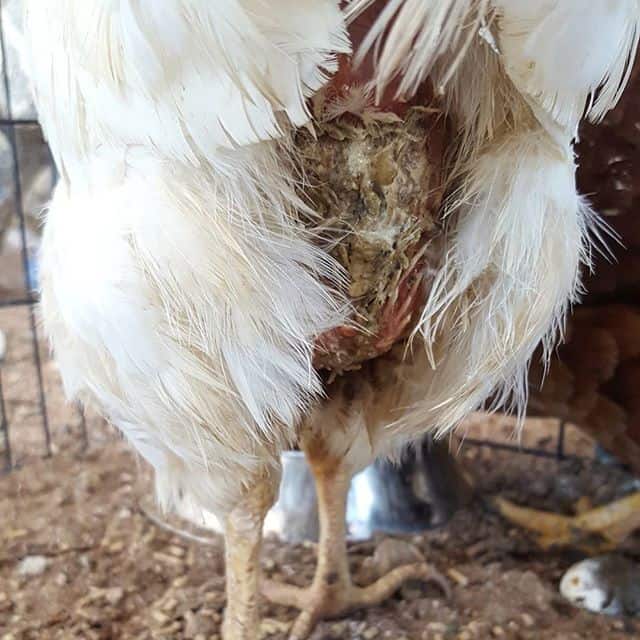
Since the causes and symptoms of this condition can significantly vary, your vet can make a diagnosis based on the following:
- Anamnesis and medical history
- Physical exam and visible clinical signs
- Laboratory analyses and fecal culture
Vent Gleet in Chickens Treatment

Although this condition is usually harmless when treated in time, the prognosis can be very poor if symptoms persist for more than 48 hours. Therefore, you should react immediately, provide comfortable conditions for your chickens, and ask for professional medical help.
Quarantine – Your first step should be to isolate the sick birds from other flock members and accommodate them comfortably in a warm and safe location. Limit stress factors and provide access to water before calling your vet.
Antibiotics – Your vet will include metronidazole tablets in the therapy. The dosage should be precise, so you have to measure 100 mg of this medicament per 2.2 pounds (1 kg) of chicken body weight. The treatment lasts four days, and you need to force your ill chickens to swallow two tablets of this antibiotic daily.
In some cases, your vet may also prescribe penicillin-type antibiotics twice a day for four days. After that period, your fowl are prepared to join the rest of the flock. Unfortunately, you need to eliminate chickens that don’t respond to treatment within this period.
Diet – Besides fresh water, your ill chickens require balanced feed rich in protein, supplements, and probiotics during the quarantine period. Add some eggshells and grit for better digestion.
Keep the vent area clean – Use warm, soapy water and gently remove all built-up feces from the chicken’s butt, including dried and fresh layers.
That way, you will prevent attached dry droppings from irritating the skin and keep insects, particularly flies, far away. Laying their eggs on irritated skin is the last thing your chickens need.
You can also draw saline solution into a plastic syringe and rinse the cloaca area before applying an iodine-based antiseptic. Keep with this procedure for about three to four days.
Anti-fungal cream – You can buy over-the-counter cream to suppress the fungi growth. Apply it over the vent area only after cleaning it thoroughly.
Epsom salt – Even though Epsom salt is not a cure and can’t replace veterinary treatment, you can use it to alleviate skin irritation. Mix two tablespoons of this compound with warm water and let your chickens soak their butts for approximately 10 minutes.
Take the chickens out and dry the area with a paper towel or an old towel. Finally, apply Canesten cream around the vent opening and repeat the procedure every two days until noticing improvement.
Cider vinegar – The excellent idea is to balance pH levels in chicken bodies by providing a proper water solution. Make it by adding 1 to 4 tablespoons of cider vinegar to 1 gallon (3.8 l) of drinking water.
Garlic – Crush a few garlic cloves and add them to 1 gallon (3.8 l) of drinking water. They can boost immunity and help your chickens fight this unpleasant health issue.
Molasses – Prepare a mixture of 0.5 cups of molasses per 1 gallon (3.8 l) of water and let ill chickens drink it within a few hours. Then, replace it with fresh water.
Yogurt – If you want to avoid commercial probiotics, you can offer one tablespoon of yogurt to your chicken daily instead. Always choose plain unflavored yogurt without additives and excessive sugar content.
Sea kelp – If you have a possibility to buy sea kelp, you can offer them to your fowl as a natural prebiotic.
Quik Gel solution – Apply 0.1 ounces (3 ml) of lukewarm Quik Gel solution into the vent opening. Then, gently massage the area for a few minutes if your chicken enjoys it without signs of pain and discomfort. It is an excellent way to enable regular pooping when such a problem exists.
Trimming the vent feathers – Carefully cut plumage around the cloaca to make cleaning the area less complicated.
Treat the entire flock – Your vet may recommend treating the whole flock with antibiotics after diagnosing a particular infection. That is sometimes the only way to stop the problem from worsening.
Vent Gleet Prevention
Since numerous factors may lead to Vent Gleet in fowl, it is often impossible to prevent them. However, you should do your best to provide the conditions for your flock to stay healthy and protected. The best things to do is to:
- Provide adequate feed for your fowl, depending on their age
- Minimize giving treats
- Provide regular eggshell and grit supply
- Offer probiotics to your chickens once in a few weeks
- Remove stressors like food and water shortage and excessive noises
- Keep the flock free of mites
Summary
Vent Gleet is a condition that affects chickens’ cloaca. Even though it is perfectly curable, the prognosis is poor when advanced symptoms last more than two days. Your timely reaction, proper therapy, and improved enclosure maintenance help in infection control.

